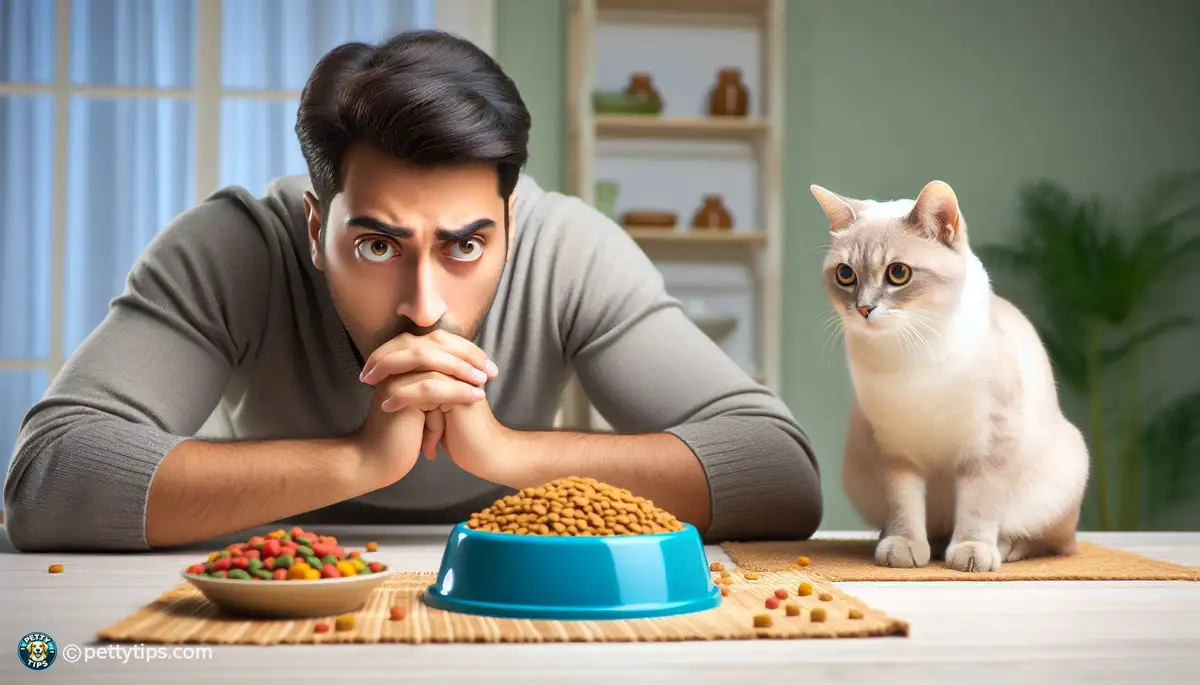
Decoding the Intricacies of Cats Attention-Seeking Behavior
Keita Mori - Oct 17, 2024 - 7 min read


Does your furry feline friend inhale their food like it’s the last meal on earth? Don’t worry; you’re not alone in this concern. Many cat owners observe their pets gobbling down their food with lightning speed. While it might seem like a harmless quirk, rapid eating in cats can lead to various health issues if left unchecked. Understanding why your cat eats quickly is the first step toward finding a solution.
Rapid eating in cats can pose several risks to their health and well-being. One of the primary concerns is the potential for choking or gagging on large chunks of food. When cats eat too quickly, they may not take the time to chew their food properly, increasing the risk of blockages in the throat or digestive tract. Additionally, fast eating can lead to vomiting, indigestion, and even obesity in some cases.
There are several reasons why cats may develop a habit of eating too quickly. One common cause is competition with other pets in multi-pet households. Cats may feel the need to rush through their meals to ensure they get their fair share before another pet steals it away. Another factor could be hunger or anxiety, especially in cats that have experienced food scarcity or stressful situations in the past. Additionally, some cats simply have a voracious appetite and lack self-control when it comes to food.
One effective way to address rapid eating in cats is by implementing slow feeding techniques. There are various products available, such as puzzle feeders and slow feeder bowls, designed to encourage cats to eat more slowly. These devices make it more challenging for cats to access their food quickly, forcing them to work for each bite. Additionally, spreading your cat’s food across a large surface area or hiding small portions throughout the house can also help slow down their eating pace.
Instead of feeding your cat one or two large meals a day, consider dividing their daily food allowance into smaller, more frequent meals. This approach not only helps prevent rapid eating but also mimics the natural feeding behavior of cats in the wild. By offering multiple smaller meals throughout the day, you can help satisfy your cat’s hunger without encouraging them to devour their food in one sitting.
Another strategy for managing rapid eating is to implement food pacing techniques during mealtime. This involves manually slowing down your cat’s eating pace by hand-feeding them or using interactive feeding methods. By controlling the rate at which your cat consumes their food, you can help them develop healthier eating habits over time. Additionally, incorporating breaks during mealtime can give your cat’s digestive system a chance to process the food more effectively.
In some cases, rapid eating may be a symptom of underlying stress or anxiety in cats. If you suspect that stress is contributing to your cat’s eating habits, it’s essential to identify and address the underlying causes. Providing a calm and stable environment, offering plenty of opportunities for mental and physical stimulation, and incorporating relaxation techniques such as gentle massage or soothing music can all help reduce stress levels in cats.
If your cat’s rapid eating persists despite your efforts to address it, it’s crucial to rule out any underlying medical conditions that may be contributing to the behavior. Conditions such as hyperthyroidism, diabetes, or gastrointestinal issues can all affect a cat’s appetite and eating habits. Schedule a visit to the veterinarian for a thorough examination and diagnostic testing to ensure your cat’s health is not being compromised.
In some cases, addressing rapid eating in cats may require a combination of behavioral modification techniques. Working with a professional animal behaviorist or veterinarian can help identify specific triggers or underlying behavioral issues contributing to your cat’s eating habits. By implementing targeted training and behavior modification strategies, you can help your cat develop healthier eating behaviors and reduce the risk of associated health problems.
Rapid eating in cats may seem like a minor concern, but it can have significant implications for their health and quality of life. By understanding the underlying causes of this behavior and implementing appropriate management strategies, you can help your cat develop healthier eating habits and reduce the risk of associated health issues. Whether it’s using slow feeding techniques, addressing underlying stress or medical concerns, or seeking professional guidance, taking proactive steps to address rapid eating can make a world of difference for your feline friend. Remember, a happy and healthy cat starts with proper nutrition and care.